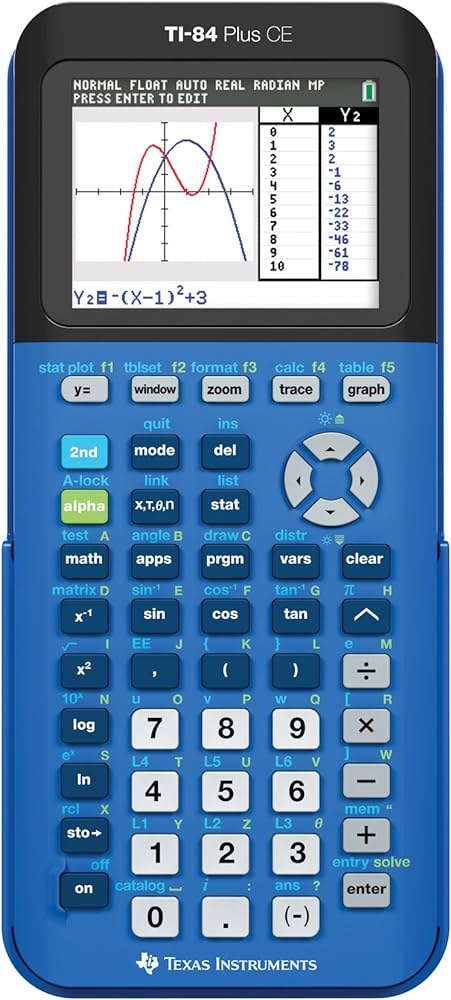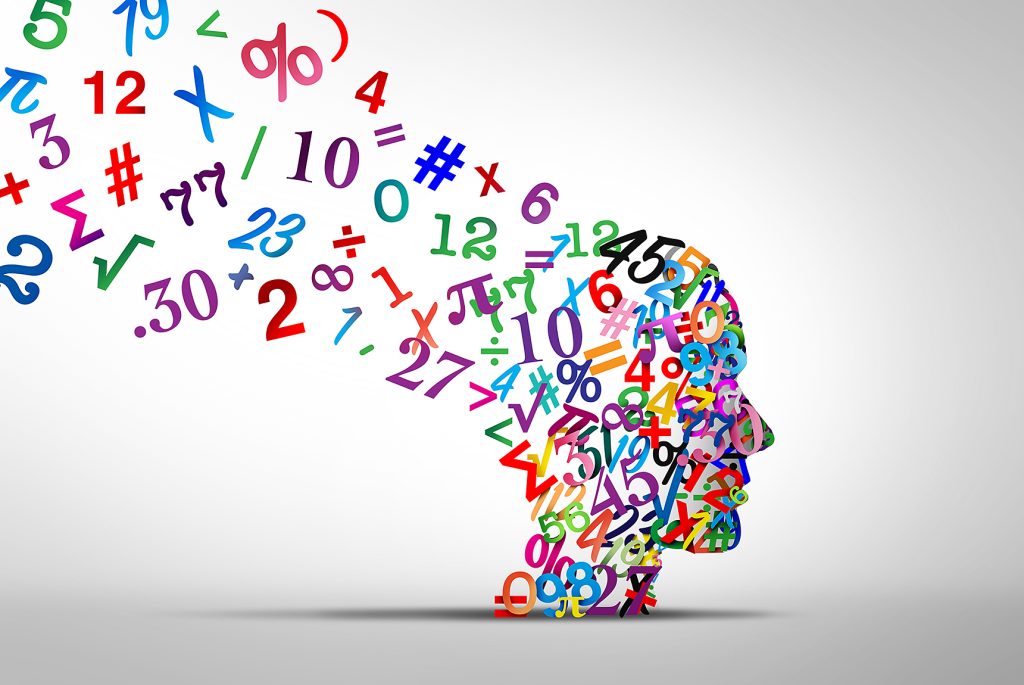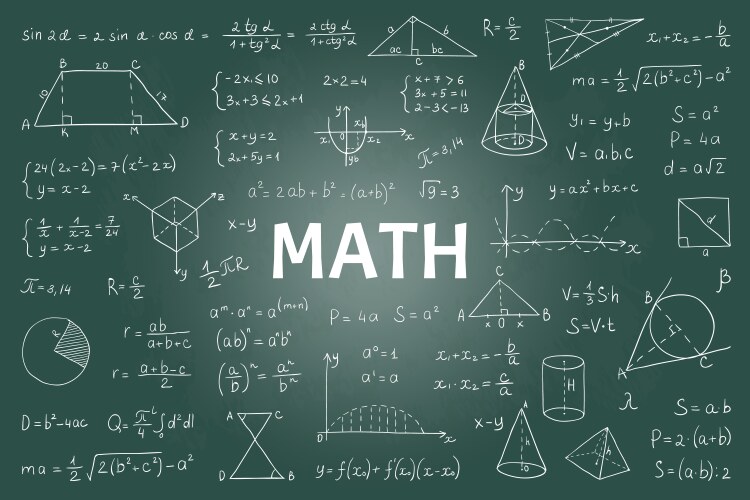
SAT Prep Math Survival Guide.
Understanding SAT-Specific Math Strategies: Your Key to Test Success
Why SAT-Specific Math Strategies Matter
In my years of coaching students for the SAT, one of the most crucial pieces of advice I emphasize is the mastery of SAT-specific math strategies. You might wonder, what exactly does that mean? Let’s dive deeper into what these strategies entail and why they are pivotal for acing the SAT math section.
What Are SAT-Specific Math Strategies?
SAT-specific math strategies are techniques that differ from the conventional methods taught in school. They are tailored to address the unique challenges and formats of SAT math problems effectively. These strategies are designed to:
- Save Time: Streamline the process of solving problems so you can manage the limited time more efficiently.
- Reduce Errors: Minimize careless mistakes, often through simpler calculations or systematic approaches.
- Enhance Accuracy: Provide reliable pathways to the correct answers, especially in scenarios where traditional methods seem confusing or inapplicable.
The Unconventional Edge
Interestingly, some of these strategies might not align with what you’d call “mathematically correct.” However, the primary goal on the SAT isn’t to uphold the sanctity of mathematical procedures but to secure the correct answers. If a strategy works, it’s valid. It’s a pragmatic approach—on the SAT, you’re not penalized for the methodology, only for incorrect results. This pragmatic approach often surprises newcomers and can even raise a few eyebrows among the math purists!
Practical Example
For instance, if faced with a complex algebraic equation, an SAT-specific strategy might involve plugging in the answer choices rather than solving the equation directly. This method can dramatically cut down on time and reduce the potential for error, providing a direct path to the correct answer.
Embracing Flexibility
Adopting these strategies requires an open mind and flexibility in your problem-solving approach. It’s about choosing effectiveness over convention, a choice that can significantly boost your performance on the test.
Mastering SAT Math: Start with Choice (B) or (C)
A Strategic Approach to Multiple Choice Questions One of the more effective strategies in tackling SAT math sections involves a systematic method of guessing answer choices, particularly when you’re unsure of the correct answer or facing time constraints. This technique not only simplifies your decision-making process but also significantly increases your chances of selecting the correct answer quickly.Why Start with (B) or (C)?
When you encounter a problem where the answers seem cryptic, consider starting your attempts with answer choices (B) or (C). The rationale is straightforward: answer choices on the SAT are typically arranged in either increasing or decreasing numerical order. By testing either (B) or (C) first, you place yourself strategically in the middle of these sequences, potentially allowing you to eliminate two wrong answers with a single calculation.Practical Example
Consider this typical SAT problem: Problem: If , then- (A) 3
- (B) 2
- (C) 1
- (D) 0
- Start with choice (C): Substitute . Calculation: . This is incorrect as it does not match 64. Therefore, you can immediately eliminate choices (C) and (D) since they are lower than (C) and will yield even smaller results.
- Next, try choice (B): Substitute . Calculation: . This matches the given value, confirming that the correct answer is indeed (B).
The Bigger Picture
Implementing this and other SAT-specific strategies into your test preparation can profoundly impact your performance. In my extensive experience tutoring students for the SAT, I equip my advanced students with 34 key strategies, each designed to optimize time management, minimize errors, and prevent common test-taking pitfalls. The more strategies you learn, the better equipped you are to tackle the test efficiently and effectively, possibly moving closer to that perfect 800 on the SAT math section.Navigating the Math Sections of the SAT
The SAT, a critical component of college admissions, is structured into five distinct parts. Understanding each section can dramatically improve your test-taking strategy and ultimately, your scores. Let’s delve into the specifics of the Math sections, which are pivotal for students looking to excel in quantitative reasoning.

Structure of the SAT Math Sections
The SAT includes two dedicated Math sections, along with Reading, Writing, and an optional Essay section. Here’s a closer look at what you can expect in each Math segment:
55-Minute Math Section:
- Type of Questions: This segment combines 30 multiple-choice questions with 8 grid-ins (also known as free-response questions).
- Calculator Usage: A calculator is permitted throughout this section, aiding in complex calculations.
- Content Covered: Questions range across various mathematical disciplines, incorporating both straightforward calculations and complex problem-solving scenarios.
25-Minute Math Section:
- Type of Questions: It consists of 15 multiple-choice questions and 5 grid-ins.
- Calculator Usage: No calculator is allowed, emphasizing mental math and simpler calculations.
- Focus: This part tests your quick thinking and accuracy in arithmetic, algebra, and other areas without the aid of technology.
Understanding the Question Types
Multiple-Choice Questions: Each question offers four answer choices. Correct answers contribute one point to your raw score, with no penalties for incorrect answers, encouraging you to attempt every question.
Grid-In Questions: Unlike multiple-choice, grid-ins require you to provide a free response. It’s crucial to familiarize yourself with the input format as many students lose points not from incorrect calculations, but from improperly entered answers.
- Answer Sheet Format: The answer sheet features four columns, each with space at the top for writing your answers and corresponding bubbles below. It’s important to note that only the markings in the bubbles are scanned and graded by the computer. The space above is provided merely for your convenience to ensure accurate bubbling.
Preparation Tips
Familiarize Yourself with the Formula Sheet: Each math section begins with directions and a list of basic formulas. These include area and volume formulas, the Pythagorean Theorem, and properties of special triangles. Having a good grasp of these can save valuable time during the test.
Practice Without a Calculator: For the 25-minute section, practice performing calculations manually to enhance your speed and accuracy without relying on a calculator.
Master the Grid-In Format: Spend time understanding how to correctly grid in answers. Practice with past papers or simulation tests to build confidence and reduce simple errors.
How to Approach Grid-In Questions on the SAT
Grid-in questions on the SAT provide a unique challenge. Here’s how to handle them effectively:
Basic Rules for Grid-In Responses
Single Selection Per Column: Ensure only one circle is marked in each column. Multiple marks in a column will automatically render the answer incorrect.
Unused Columns: If a column is not used, leave it blank. Do not feel compelled to fill in every column.
Symbols and Limitations
- Allowed Symbols: Digits 0-9, decimal points, and a division symbol for fractions.
- No Negative Answers: The grid does not accommodate negative symbols, so answers must be non-negative.
- Four Slot Limitation: Answers must fit within four slots. For example, the number 52,326 is too large to be entered.
Entering Your Answers
- Whole Numbers and Decimals: For answers such as 2451 or 2.36, start from the first column and fill sequentially. For smaller numbers like 16, you can start from column 1, 2, or 3.
- Zero Entry: If your answer is 0, it cannot be placed in the first column. Use columns 2, 3, or 4 instead.
- Fractions: If entering a fraction, ensure it fits within the four slots. For example, 2/100 should be reduced to 1/50. Fractions can also be converted to decimals if it helps them fit.
- Truncating Decimals: If a decimal answer exceeds four slots, truncate it to fit. Remember to fill all available slots when truncating.
Multiple Correct Answers
- Sometimes, grid-in questions may have more than one correct answer. Choose one correct form to enter. Never attempt to fit more than one answer into the grid.
Example Table for Grid-In Formatting
Here is a visual representation showing how to correctly fill in the answer grid based on the guidelines:

Note: The space above each column’s bubbles is just for your convenience to ensure correct entry. The computer will only read what is bubbled in.
Effective Techniques for Gridding Decimals and Fractions in SAT Math
Understanding how to correctly enter answers on the SAT’s grid-in sections can make a significant difference in your score. Here’s a clear guide on handling decimals and fractions:
Handling Decimals
- Example of Decimal Entry: Consider the repeating decimal .167777777…. For the SAT, you have two options:
- Truncation: You can truncate the decimal to .167, fitting within the grid without rounding.
- Rounding: Alternatively, you could round it to .168. While rounding is perfectly acceptable, truncation is often preferred because it is straightforward and minimizes the chance of errors.

Truncation vs. Rounding:
- Why Truncate? Truncation involves less judgment, thereby reducing the likelihood of careless mistakes. It simply cuts off the number to fit the grid, using the most significant digits directly.
Gridding Fractions
Example of Fraction Entry: For the fraction 8/9, you cannot directly grid mixed numerals or numbers that exceed the grid’s space. Always convert your fractions to fit the grid format either as decimals or improper fractions.

Handling Mixed Numerals: If your answer is a mixed numeral such as 1 ½:
- Incorrect Entry: Directly gridding 1 ½ as entered would be read incorrectly by the SAT system.
- Correct Methods:
- Convert to a decimal: 1.5
- Convert to an improper fraction: 3/2
No Penalty for Guessing
- Maximizing Score Opportunities: Remember, there is no penalty for incorrect answers in the grid-in questions, so you should always make an attempt. Leaving a question blank is a missed opportunity to potentially gain points.
Strategies for Successful Grid Entries:
- Practice the Rules: Spend time practicing with actual SAT materials or simulations to get comfortable with the entry format.
- Check Your Work: Always double-check your gridded answers against your calculations to ensure accuracy before moving on.
Understanding and applying these strategies will help you avoid common pitfalls and boost your confidence on test day. Stay tuned for more tips and strategies to conquer the SAT math section effectively.
Understanding the Math Sections on the SAT
The SAT math sections are designed to test a broad range of mathematical skills and concepts. Here’s a breakdown of the main problem types and the structure of questions you will encounter, which can help you tailor your study approach effectively.
Main Math Problem Types on the SAT
- Heart of Algebra: Focuses on linear equations, inequalities, and systems that require students to analyze and solve problems.
- Geometry and Trigonometry: Tests your understanding of shapes, sizes, properties of figures, and the relationships between them alongside trigonometric functions.
- Passport to Advanced Mathematics: Involves complex equations and functions, including quadratic equations, exponential growth, and manipulating polynomials.
- Problem Solving and Data Analysis: Includes interpreting data sets, quantitative literacy, and using ratios, rates, and proportional relationships to solve problems.
While not all SAT math questions neatly fit into these categories, they broadly cover the essential areas you’ll need to study.
Study Focus: SAT-Specific Strategies
While you likely already possess the mathematical knowledge needed for the SAT, success on the test requires more than just understanding theory. SAT questions often include intentional traps and misleading information. Therefore:
- Preparation is key: Focus on learning SAT-specific strategies and practicing with real SAT problems.
- Review as you practice: This approach allows you to refresh your math skills naturally without needing to relearn basic concepts.
Levels of Difficulty in SAT Math Questions
Math questions on the SAT are categorized into five levels of difficulty:
- Level 1: Straightforward questions that typically require basic problem-solving.
- Level 5: These are the most complex problems, often requiring multiple steps or deeper insight to solve.
The questions within each math section generally progress from Level 1 to Level 5, providing a gradual increase in difficulty.
Structuring Your Practice
Each math section includes multiple-choice and grid-in questions, which can be thought of as two separate parts:
- Multiple Choice Questions: These usually begin with simpler questions that progressively become more challenging.
- Grid-In Questions: Follow a similar pattern, with earlier questions being easier and later ones increasing in difficulty.
For example, in the 55-minute section:
- The first 10 of the 30 multiple-choice questions might be considered easy, the next 10 medium, and the final 10 hard.
- Of the 8 grid-in questions, the first 3 could be easy, the next 3 medium, and the last 2 hard.
This pattern isn’t absolute, but most students find it helpful to think of the test this way to strategically maximize their score.

Mastering Calculator Use on the SAT
Using a calculator effectively during the SAT can give you a significant advantage, especially in the Math sections where efficiency and accuracy are crucial. Here’s how to optimize your calculator use to enhance your test performance.
Choosing the Right Calculator
For the SAT, a reliable and familiar calculator is essential. I recommend using a TI-84 or a comparable model due to its functionality and ease of use. These calculators are robust, widely used in high schools, and offer the necessary features to tackle the variety of math problems you’ll encounter on the test.
Tips for Effective Calculator Use
- Practice Consistently: Always practice with the same calculator that you plan to use on test day. Familiarity with your calculator’s functions and quirks can save precious time during the exam.
- Understand Its Functions: Make sure you know how to perform complex functions that may be required on the SAT, such as solving systems of equations, graphing functions, and using trigonometric operations.
- Check Battery and Functionality: Ensure your calculator is in good working order with fresh batteries before the test day to avoid any disruptions.
Getting Comfortable with Your Calculator
The more comfortable you are with your calculator, the more confidently you will navigate the Math sections. Take time to learn any shortcuts that your calculator offers—these can drastically reduce your problem-solving time.
Understanding SAT Math Scoring and Effective Preparation Strategies
Preparing for the SAT Math section involves not only understanding the content but also mastering the scoring system and developing effective study habits. Here’s a guide to help you navigate the SAT Math section and boost your score.
SAT Math Scoring Explained
The SAT consists of various sections, with the math portion contributing significantly to your overall score. Here’s how scoring works:
- Scoring for Correct Answers: Each correct answer on the SAT Math section adds one point to your raw score. There is no penalty for wrong answers, so guess if you’re unsure—every point counts.
- Scaled Score: Your raw score is then converted into a scaled score, ranging from 200 to 800, using a conversion chart unique to each SAT. Typically, achieving a perfect score of 800 requires answering all questions correctly, though occasionally you might miss one question and still achieve a perfect score.
The Correct Way to Prepare for SAT Math
Effective preparation is crucial for success on the SAT Math section. Here are three key components to focus on:
Learn Test-Taking Strategies:
- Dedicate time to learn one to three SAT-specific math strategies each week.
- Apply these strategies to practice problems, aiming to solve each problem in multiple ways: using the SAT strategy, the quickest method, the standard school method, and the easiest way you can find.
Consistent Practice:
- If your SAT test date is within four months, ensure you have a daily practice schedule.
- Start each session by learning a new strategy or reviewing a known one.
- Rotate through the four main topics: Heart of Algebra, Geometry and Trigonometry, Passport to Advanced Math, and Problem Solving and Data Analysis. This rotation ensures comprehensive coverage.
Strategic Review:
- Focus the first half of your study session on reattempting problems you previously got wrong. Successfully solving them means you can set them aside; if you get them wrong again, mark them for future review.
- Spend the second half of your study session tackling new problems within the same topic, staying within the appropriate difficulty level to build confidence and skill gradually.
Revisiting and Learning from Mistakes
- It’s vital to revisit incorrect answers, regardless of the reason for the mistake. This practice helps eliminate careless errors and enhances your problem-solving skills.
- Mark all wrong answers, regardless of the type of error, and plan to review these in subsequent sessions.
Resources and Tools
- For a comprehensive list of 32 essential SAT Math strategies I teach, check out this infographic on my Pinterest page.
Conclusion
Understanding the SAT scoring system and incorporating these structured preparation strategies can significantly improve both your SAT score and your mathematical skills. Remember, consistency and the willingness to learn from mistakes are key to turning potential into performance on test day.
Recent Posts
- Geometry Regents Score Calculator (2025 NY Exam Tool)
- Algebra 2 Regents Score Calculator (2025 NY Exam Tool)
- Algebra 1 Regents Score Calculator (NY Regents Estimator)
- PreACT® Score Calculator (2025 Raw-to-Scaled Estimator)
- ACT® Score Calculator (2025 Raw-to-Scaled Score Tool)
- PSAT® Score Calculator (2025 Digital Exam Estimator Tool)
- AP® Music Theory Score Calculator (2025 Exam Estimator)
- AP® Art History Score Calculator (2025 Exam Estimator)
- AP® Spanish Literature Score Calculator (2025 Exam Tool)
- AP® Spanish Language Score Calculator (2025 Exam Tool)
- AP® Latin Score Calculator (2025 Exam Scoring Tool)
- AP® German Language Score Calculator (2025 Exam Tool)
- AP® French Language Score Calculator (2025 Exam Tool)
- AP® English Literature Score Calculator (2025 Exam Tool)
- AP® English Language Score Calculator (2025 Exam Tool)
Choose Topic
- ACT (17)
- AP (20)
- AP Art and Design (5)
- AP Chemistry (1)
- AP Physics 1 (1)
- AP Psychology (2025) (1)
- AP Score Calculators (35)
- AQA (5)
- Artificial intelligence (AI) (2)
- Banking and Finance (6)
- Biology (13)
- Business Ideas (68)
- Calculator (73)
- ChatGPT (1)
- Chemistry (3)
- Colleges Rankings (48)
- Computer Science (4)
- Conversion Tools (137)
- Cosmetic Procedures (50)
- Cryptocurrency (49)
- Digital SAT (3)
- Disease (393)
- Edexcel (4)
- English (1)
- Environmental Science (2)
- Etiology (7)
- Exam Updates (7)
- Finance (129)
- Fitness & Wellness (164)
- Free Learning Resources (208)
- GCSE (1)
- General Guides (40)
- Health (107)
- History and Social Sciences (152)
- IB (9)
- IGCSE (1)
- Image Converters (3)
- IMF (10)
- Math (44)
- Mental Health (58)
- News (9)
- OCR (1)
- Past Papers (450)
- Physics (5)
- Research Study (6)
- SAT (39)
- Schools (3)
- Sciences (1)
- Short Notes (5)
- Study Guides (28)
- Syllabus (19)
- Tools (1)
- Tutoring (1)
- What is? (312)
Recent Comments

Top 10 Test Taking Tips for the Digital SAT

What’s the Difference Between Early Action, Restrictive Early Action, and Early Decision?

What is the Difference Between the ACT and the SAT?

Basic Algebra Concepts: Lesson 2.2

Math AA exercise - Everything you need to know



